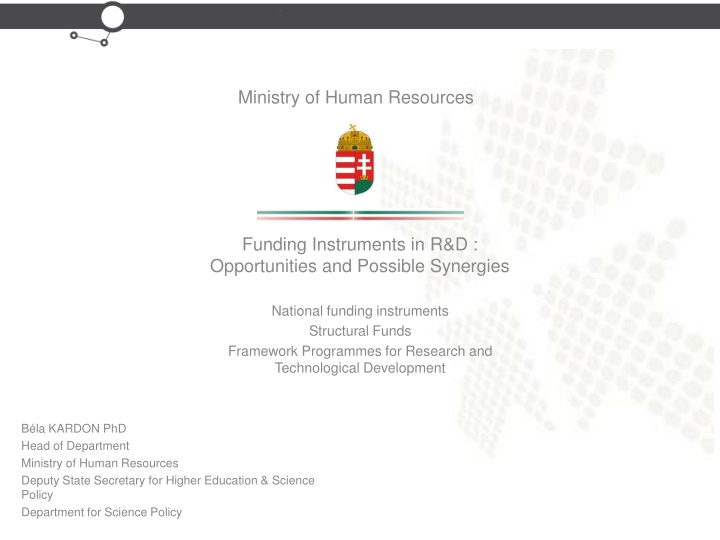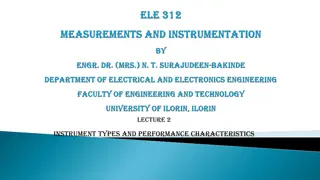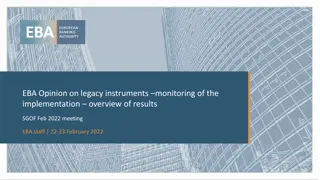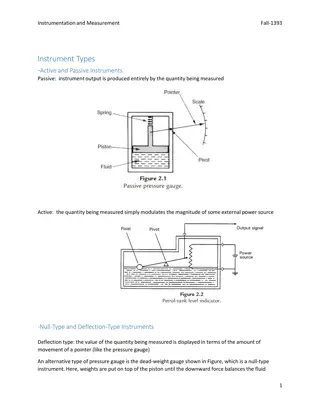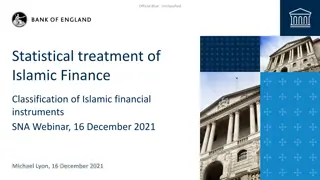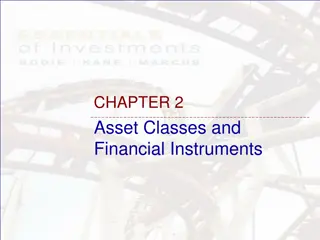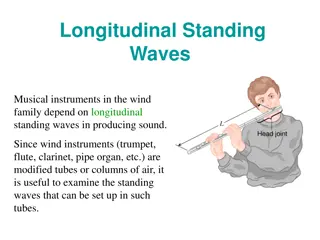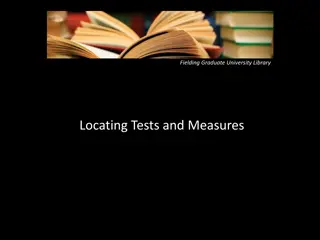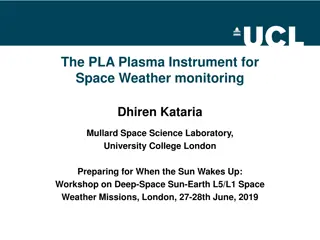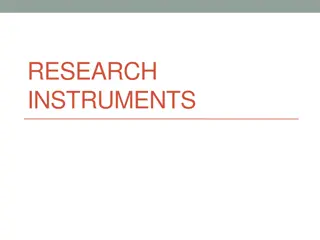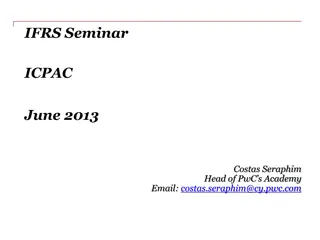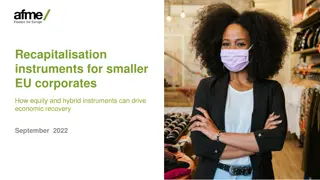Ministry of Human Resources Funding Instruments in R&D: Opportunities and Synergies
Explore national funding instruments and structural funds for research and technological development. Insights from Bla KARDON, PhD, Head of Department at the Ministry of Human Resources.
Download Presentation

Please find below an Image/Link to download the presentation.
The content on the website is provided AS IS for your information and personal use only. It may not be sold, licensed, or shared on other websites without obtaining consent from the author.If you encounter any issues during the download, it is possible that the publisher has removed the file from their server.
You are allowed to download the files provided on this website for personal or commercial use, subject to the condition that they are used lawfully. All files are the property of their respective owners.
The content on the website is provided AS IS for your information and personal use only. It may not be sold, licensed, or shared on other websites without obtaining consent from the author.
E N D
Presentation Transcript
Ministry of Human Resources Funding Instruments in R&D : Opportunities and Possible Synergies National funding instruments Structural Funds Framework Programmes for Research and Technological Development B la KARDON PhD Head of Department Ministry of Human Resources Deputy State Secretary for Higher Education & Science Policy Department for Science Policy
Cohesion Policy Structural Funds Cohesion Policy NEFMI TPF Aim: to reduce regional disparities in Europe terms of income, wealth and opportunities. Europe's poorer regions receive most of the support, but all European regions are eligible for funding under the policy's various funds and programmes. The European Regional Development Fund (ERDF) The European Social Fund (ESF) increasing the adaptability of workers and enterprises enhancing access to employment and participation in the labour market reinforcing social inclusion by combating discrimination facilitating access to the labour market for disadvantaged people promoting partnership for reform in the fields of employment and inclusion. regional development economic change enhanced competitiveness and territorial co-operation throughout the EU. Funding priorities include modernising economic structures, creating sustainable jobs and economic growth, research and innovation, environmental protection and risk prevention. Investment in infrastructure also retains an important role, especially in the least-developed regions
Cohesion Policy Science Policy Reducing regional disparities improving competitiveness Competitive economy Competitive researchers Competitive enterprices Competitive higher education Competitive workforce
Ministry of Human Resources Who are we? 7 different portfolios Church, Minority and Non- governmental Relations Social, Family and Youth Affairs. Social Inclusion Health Culture Sport Education
The governmental RTDI institutional structure Science Policy Government National Council for Research, Innovation and Science Policy Ministry of Human Resources Ministry of National Economy Ministry of Public Admin. and Justice Ministry of National Development The Hungarian Association for Innovation and other NGO s Hungarian Academy of Sciences Hungarian Scientific Research Fund (OTKA) Hungarian Intellectual Property Office Hungarian Rectors Conference National Innovation Office National Development Agency National Council for Research, Innovation and Science Policy (NKITT) is the strategic advisory body on governmental science, RTD & innovation policy. Ministry of Human Resources (EMMI) is responsible for higher education and the governmental science policy. Ministry of National Economy (NGM) is responsible for innovation and governmental RTD policy. Ministry of National Development (NFM) supervises the resources for development. Ministry of Public Administration and Justice (KIM) is responsible for the coordination of the science policy and coordinates the work of the Council (NKITT). The Hungarian Academy of Sciences (MTA) is as an independent public body the highest national representative of the scientists.
Funding Sources for RSDI National Sources EU Funding Cohesion Policy Hungarian Scientific Research Fund (OTKA) Research and Technological Innovation Fund (KTIA) Framework Programmes for RTD (Horizon2020) CIP Etc. Structural Funds ESF ERDF Cohesion Funds Other Sources: Swiss Contribution; EEA financing mechanism, etc.
Coherence of EU- and National Strategies NRP priorities EU2020 headline goals SROP programmes Reducing study time overhang and drop out rates 4.1.1/B Mentor services Increasing the share of those having completed tertiary level education 4.1.1/C Regional cooperation Improving foreign language skills 4.1.2/B Support for Teachers training Increasing employment rate 4.1.2/D Language training Increasing expenditures on R&D Raising the number of engineering and IT graduates 4.2.2/A Innovative research teams Reducing the share of people living in poverty Developing the vocational training system and strengthening its labour market relevance 4.2.2/C Future programmes (R&D) Increasing the share of renewable energy resources 4.2.3. Dissemination and future HR 4.2.5/A Electronic content service Raise R&D expenditure to 1.8% of GDP 4.2.5/B Electronic content developing Digital agenda
Timing a critical issue! 12.2006. Publication of call 05.2007. Deadline for submission 08.2007. Results 01.2008. Project start 03.2008. Pre-payment 01.2009. First Report 09.2009. First invoice-based payment Nearby 3 years between call published and first invoice based payment in an FP7 project.
Objectives of the new Cohesion Policy Cohesion Policy NEFMI TPF EU 2020 is the basis of the new programming period, the multiannual financial framework 2014-2020 Concentration of resources on the objectives of Europe 2020 through a common set of thematic objectives to which the funds will contribute; Simplification through more coherent planning and implementation arrangements; Focus on results through a performance framework and reserve; Reduce the administrative burden for beneficiaries and managing authorities. Rules of procedure Simplifications
Using Cohesion Policy Expectations of the European Commission National Regulations Operative Programmes Timing Moniotoring Best practices Simple and transparent rules Feasible national commitments Tailor operative programmes to EU strategies Coherent rules of procedure Leave opportunites open for possible synergies between funding instruments Good planning is essential!
Lessons learned / best parctices maintain direct contact with clients (e.g. higher education institutions) Regular visits Speed up payments Golden rule A few examples for possible synergies Cohesion policy and national sources Publishing calls in regions not eligible for Cohesion Policy funding using national sources. (KTIA SROP 4.2.2.A & SROP 4.2.2.C) European Social Fund based measure aiming at integrating Hungary into the European Research Area increase involvement in FP7 calls. (SROP 4.2.2.A & SROP 4.2.2.C) Creating a national equivalent of a European Event using the Cohesion Policy funds Researchers Night SROP 4.2.3 Cohesion Policy and FP7
Thank you for your attention! NEFMI TPF E-mail: bela.kardon@emmi.gov.hu Office: Bp. Szalay u. 10-14. 6. szint 638. Tel: +36 (1) 7954096 Fax: +36 (1) 7950256
